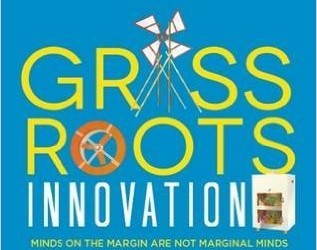Reminders serve little purpose if the victims also resign to a kind of learned-helplessness. With the exception of a few private attempts to dig small tanks, there has been no campaign in the country to store rain water where it falls, that is, in situ conservation. Why has budgetary allocation for such a strategic goal been paltry and community initiatives so feeble. Even large institutions, academic or otherwise, in cities and rural areas have been indifferent to this urgent need. More sad than strange.
I have been writing for more than a month that ourshould be improved for urban as well as rural areas. readiness to receive good rains. What can still be done and must be done. Urban conusmers are interested in road without frlod, so they take interest in drainage an droad conditions befoe rian. But they don’t realise that water conservation is not just farmers’ responsibility. Every one of us who is a consumer should also be a conservator. I offered to pay for the underground tank in my Campus house so that after I retire, next resident will benefit from high quality stored water, and enjoy a good garden. Today we use the same water for gardening that we use for drinking. It is easy to recycle water from kitchen, bathrooms etc., for this purpose as well as for sanitation.
While regulations requiring roof top water harvesting exist, enforcement is lax. Municipal commissioners must not renew right to public water supply, electricity etc., unless this is done. Optimal coercion certainly is not zero. The success of the commissioner should be judged among other carors, the extent of enforcement of this principle. The urban dwellers will benefit directly. Apart from getting salt free water for use, they will save on electricity used to pump water from ever declining ground water table. Yet, collective rationality doesn’t always lead to individual rationality. Worse is the bureaucratic inertia which led to throwing 100 crore litre of treated water into sea in Mumbai rather than developing a distribution channel and system for the public and private non-potable use.
IF the President of India and the Prime Minister exhort the country to take a major plunge and ensure that every public and private undertaking takes concrete steps in this regard, results can be achieved. The Recent admirable example of millions of people foregoing LPG subsidy shows that popular will can indeed be invoked in the larger social and ecological interest. This can happen from below also for which each one of us has to take initiative and bring about some change in our own area of influence. If every panchayat, housing society, institutional communities, schools, colleges and community decide to conserve rainwater, we can make a big impact. In any case, it is imperative. Western India is almost on the verge of critical limits, more than fifty percent wells are over drawn. In our campus, water table has gone down more than ten feet every year in the last three decades. It is obviously not sustainable. There are places where water mining has been going on for decades and we are drawing fossil water, that is water which was trapped between rocks when earth was formed in very deep aquifers, thousand feet down almost. Rain water may not charge those aquifers. Future generation will not forgive us for our profligacy.
What are the urgent checks needed for rural areas: a) whether seeds are available in each district in sufficient diversity, quantity and good quality? b) whether those whose bullocks are weak (because of two-three years of drought in some parts) have access to hired tractor? To what extent multipurpose cooperatives, wherever functional/viable have stocks of fertilizers to disburse among farmers? Whether drainage equipments ( NIF has a few innovative manual pumps for the purpose) are available to make fields fit for sowing or transplantation if excessive rains take place? Similarly, feed, fodder and medicines for animals in all the regions but particularly in the regions that suffered drought? Banking system should monitor flow of credit every week so that bottlenecks in any region are quickly identified and resolved.
There are many more indicators that need to be tracked for ensuring that good rains that India expects don’t go down the drain. One has to ensure that rain water is harnessed for not just improving productivity, keeping good quality water for human and animal use but also for draining salts that may have come up in some of the affected dry regions. I hope that this will be last time when country will welcome rains without a district and ward wise itemised plan for conserving, distributing, and utilizing rain water. Non monetary farmers’ technological innovations in Honey Bee Network database already shared by SRISTI and HBN with Ministry of Agriculture, central government must be made available in local languages to each panchayat to trigger local experimentation, and higher resource use efficiency.

